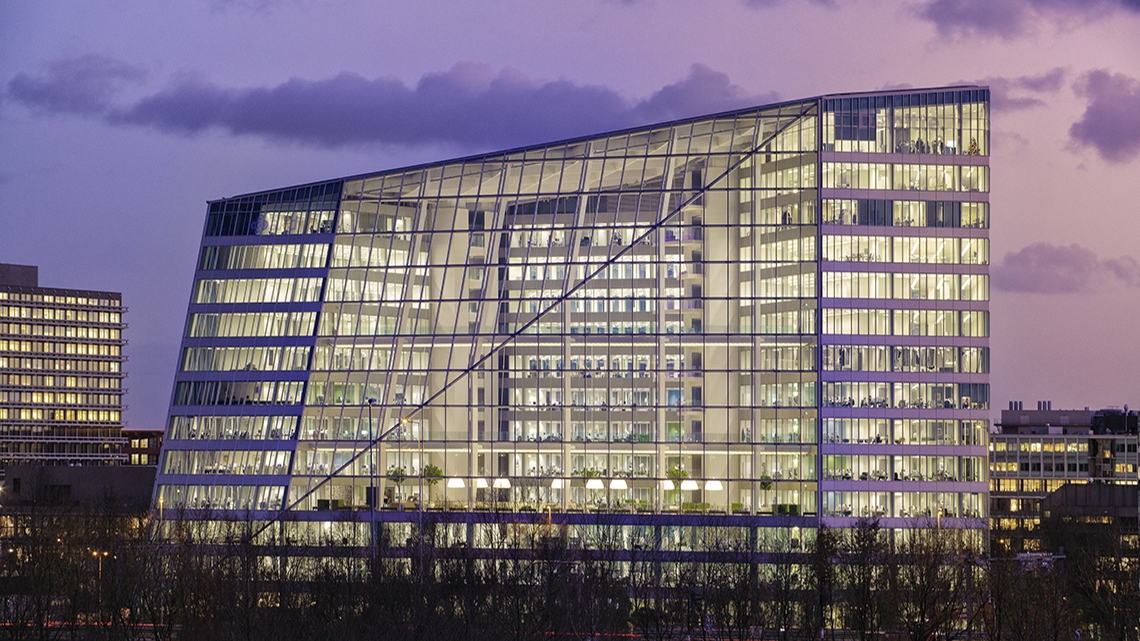
At NeoCon 2021: How To Think About the Future Before It Happens
Marti Konstant wasn’t always a workplace futurist. In fact, she has quite a varied portfolio, not limited to stints in graphic design, tech development, marketing, and now predictive philosophy. That last one is my very own coinage, for it’s a bit difficult to name what she does. Based on her discussion on Monday at NeoCon 2021—entitled “You’ve got to be from the future to design a resilient workplace: from the sketchbook of a workplace futurist, design thinker, and agility researcher”—Konstant’s job is to re-invent our attitudes about change, because if we can do this, especially in the context of the workplace, we’ll succeed in her mission (which also should be everybody’s mission) to “cultivate happy, profitable employees with workplace agility.”
Konstant acknowledges that, yes, change is scary, today even more so because we’re facing a rapid onslaught of it, especially in the workspace. In fact, our latest epoch is characterized by exponential change, beginning of course with digital technology; then augmented by the opening-up of the office and the move away from fixed, depersonalized workstations; and finally thrown into virtual chaos by COVID. Even so, history proves that those who expect and adapt to change fare better than those who resist it.

Part of her approach involves developing a kind of spidey-sense for emerging trends, and while no one could have predicted the pandemic (though even this statement may be wrong, as I imagine far-reaching disease outbreaks were and still are on the radar of a small sub-set of virologists), she believes that if we cultivate an open mindset about fringe notions and marginalized phenomena then we’re more likely to be successful at anticipating the next big upheaval and thereby adapting our paradigms in advance of it.
These ideas extend to about every facet of modern life, but Konstant’s specialty is work, so most of her examples pertain to the changing face of the workspace. Take the transition from the repressive, patriarchal office milieu of the 1940s and 50s and its transition to the elegant and expensive forms of the Action Office—a rapid change that helped usher in an (at least slightly) more egalitarian age. And then how this, in turn, morphed into the hellscape of cubicles that predominated throughout the 80s and 90s.

Her point is that change begets change in surprising ways, that the true visionary evolves while stagnant thinkers remain, well, stagnant, quite often vanishing into oblivion. Outside the world of the workspace, she points out that Blockbuster failed to see what was coming (or they saw it but refused to engage it) and, hence, died a fairly rapid death, while Netflix anticipated and augmented the trend of digital access to entertainment and became, well, Netflix.
Netflix is an instructive example where COVID is concerned because their success shows what agility really is. In March of 2020, when the entire world was pretty much prohibited from going into a work place, Netflix immediately transitioned into work from home. And, Konstant points out, this move wasn’t a mandate from on high but rather the result of dozens of decisions at the managerial level.
Ever wonder why our binge watching over the last one and one-half years hasn’t missed a beat? And in fact intensified? This is the answer: real flexibility and a facility for intuiting change and responding to it in short order.
The last decade is rife with similar examples: Über pretty much knocks taxis off the face of the earth; Amazon easily dethrones Sears and really any other business relying on mail order; iPhone shows Blackberry that it’s not just a phone (and, in fact, is it still a phone at all?); Twitter proves more responsive and agile (and potentially more truthful) than late-breaking network news.
Demonstrating the huge repercussions for good and for bad of either anticipating or failing to anticipate trends is one aspect of Konstant’s mission, the other is showing how to do it. Or, in her language, recognizing that “When change happens, don’t do nothing.”
She provides a nifty acronym for not doing nothing, which also plays out pretty effectively as an evolutionary metaphor: “Challenge your DNA”. By this, Konstant means to constantly be questioning our own assumptions. In order to do this we must: 1. Disrupt, 2. Notice, and 3. Act.
If we’re operating under the assumption that work is a place, recent developments have encouraged us to challenge that idea, to perhaps embrace the notion that work is not a place at all but rather a state-of-mind, an idea. Those who stubbornly cling to the former miss out on a host of opportunities that have now involved into persistent realities. Think, for a moment, of how much time, how many resources, and how much mental space have spun off of this one change in mindset?: Work-from home and the consequent changes in buying patterns, transportation, infrastructure investment, food prep, and consumption in general; flexible approaches to the idea of where work is done including the enhancement of remote communication, satellite offices, and urban flight; the development of smart offices and the enhancement of AI and robotics technology.
Think where one whose livelihood depends upon these trends would be today if they had stubbornly clung to the status quo. And don’t even spend time parsing the identifiable trends that have spun off of this idea, but instead just consider it from a rationalist perspective: throughout the pandemic, scores of workers have realized that quality of life matters, that they enjoy being in their own environment. Lots of them are insisting on maintaining some aspect of work from home (one survey has this number at 77%, with 33% saying they would quit if not afforded some remote working time). Many of them have quit their jobs. In fact, the entire food and drink service industry is imperiled because so many bartenders and servers have realized that this is not how they want to spend their lives.
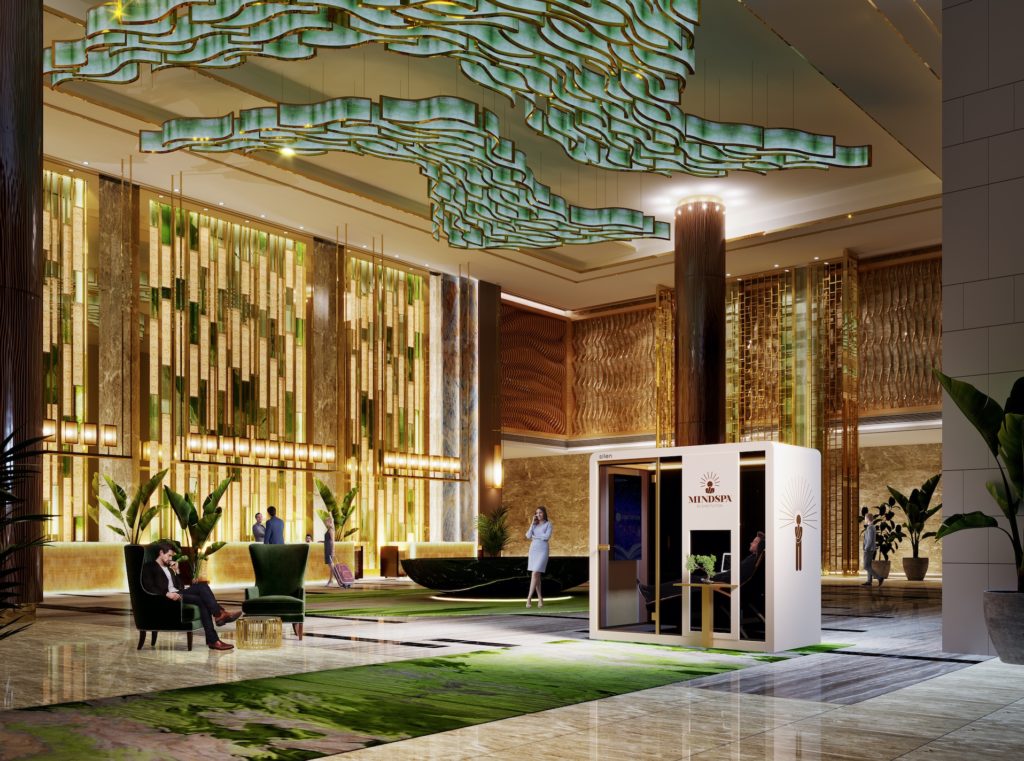
Konstant says that the remote work trend was already well under way before COVID. She acknowledges that the bulk of her audience knows this and was likely spending some amount of time doing work from the “in-between spaces” like planes, trains, automobiles, parks, coffee shops, lobbies, kitchen countertops, and other virtual platforms. In the commercial furniture sector, one only need pinpoint the relatively recent “resimercial” trend, the increase in dedicated privacy infrastructure, and the preponderance of “soft architecture” to show the intermingling of home and office. Prescient manufacturers like Steelcase, Haworth, Framery, and LUMIN OU have been on this for a while. But who could have conceived that we’d respond enthusiastically to structures made for the office that recreate aspects of being outdoors?
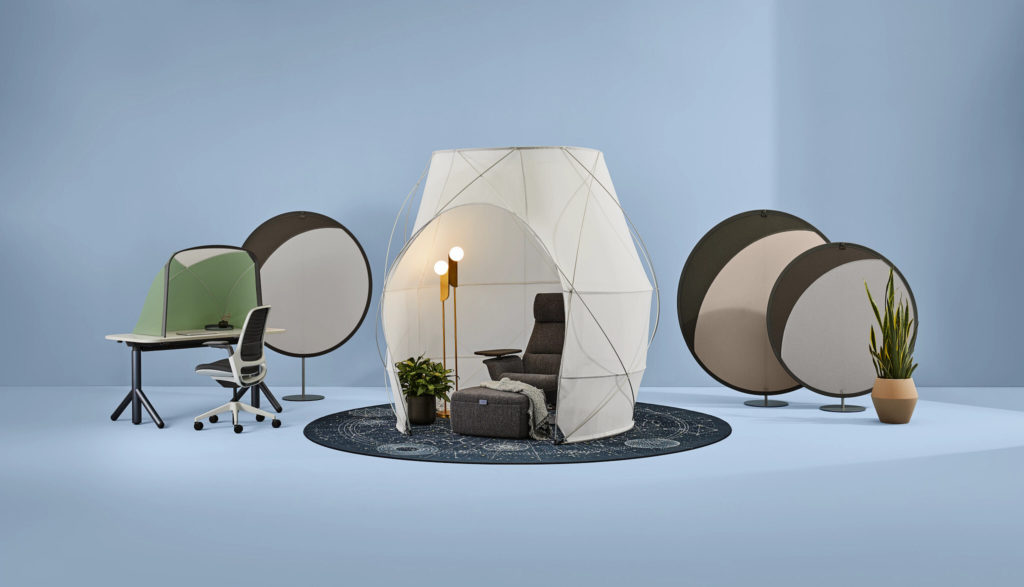
The most forward-thinking among us, that’s who. The same subset of thinkers who presently are calculating the encroachment and evolution of blockchain, for instance, or enthusiastically welcoming AI and smart buildings, buying up NFTs.

Konstant points out that It can be useful here to distinguish between a “trend” and a “signal.” Trends are already happening. Signals are lurking in the shadowy corners of the web, being discussed by a select few on Reddit forums or debated on obscure podcasts. Those among us who can learn not to discount the signals—no matter how far afield they may seem to be—are the ones who will be able to identify the paradigm-shattering opportunities, the ones who know how to “think about the future before it happens” and respond with appropriate agility.
When it comes to the workspace of the future, Konstant is encouraging all of us to develop these skills, to recognize that, while change can indeed be scary, it’s coming for us whether we want it to or not. History has proven that the keys to personal, institutional, and cultural sustainability are found herein—and we ignore them at our peril.
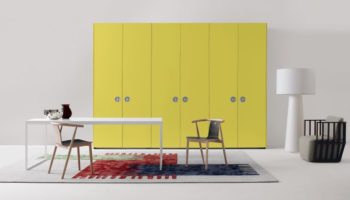
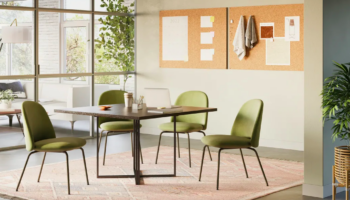
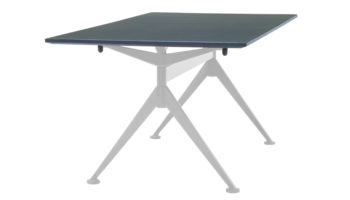
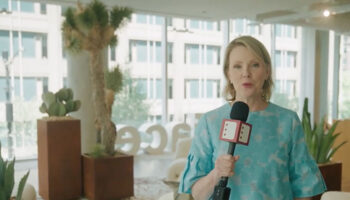
Leave a Reply